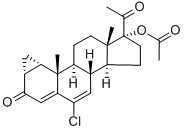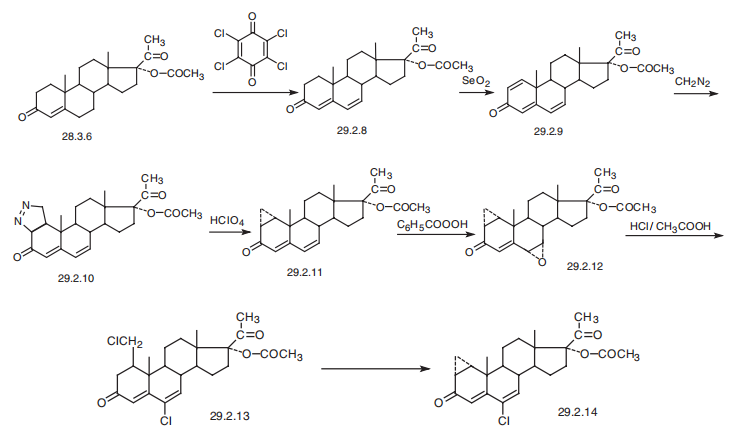
Cyproterone
- Product NameCyproterone
- CAS2098-66-0
- CBNumberCB9105300
- MFC22H27ClO3
- MW374.9
- MDL NumberMFCD00869226
- MOL File2098-66-0.mol
- MSDS FileSDS
Chemical Properties
| Melting point | 208-210°C |
| Boiling point | 521.0±50.0 °C(Predicted) |
| Density | 1.29±0.1 g/cm3(Predicted) |
| storage temp. | Refrigerator |
| solubility | Chloroform (Slightly), Methanol (Slightly) |
| form | Solid |
| pka | 12.86±0.70(Predicted) |
| color | Off-White to Yellow |
| FDA UNII | E61Q31EK2F |
| ATC code | G03HA01 |


